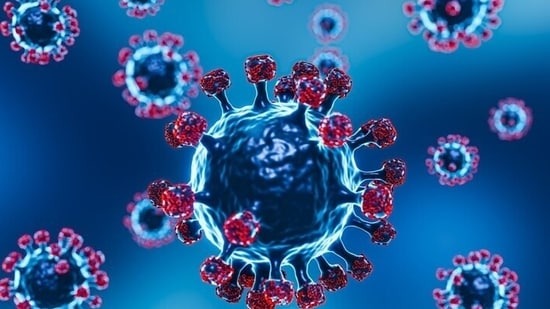
Amid the withdrawal of AstraZeneca's Covishield and doctors calling for a review of the science behind Covid vaccines, two new variants of Omicron lineage collectively known as FLiRT are spreading in the US. It has sparked concern of a fresh wave. This has left everyone worried and curious about the variants KP.2 and KP.11 which have undergone new mutations and have become more infectious than previous variants. They can evade immunity from vaccines and previous infections. The symptoms largely remain the same like fever, cough, fatigue, digestive trouble, etc. In the wake of waning immunity and social distancing no longer a norm, it's important to stay alert against the new Covid threat. (Also read: New Covid variant FLiRT spreads in the US; do we need to worry? Symptoms to precaution, all you need to know)
"In the landscape of COVID-19, COVID-19 variants within the Omicron JN.1 lineage, called FLiRt variants, present new challenges. The variants KP.2 and KP 1.1 have new mutations that make them more contagious than previous Omicron variants. Their symptoms, akin to earlier variants, include fever, cough, and fatigue. However, their heightened transmission rate demands stringent precautions. They also show the ability to evade immunity from prior infection and vaccines. The variant spreads easily through respiratory droplets, posing risks to all, especially the unvaccinated and those with compromised immunity. With subtle genetic differences, FLiRt diverges from earlier variants, requiring tailored management techniques," says Dr. Sushila Kataria, Senior Director of Internal Medicine, at Medanta, Gurugram.
Important facts related to the FLiRT variant you must know
Dr Arunesh Kumar, Sr Consultant & Head - of Respiratory Medicine, Paras Health, Gurugram shares key facts about the FLiRT variant:
1. Can they evade immunity?
According to The Infectious Disease Society of America, this new COVID variant is a subvariant of the Omicron variant, named FLiRT. They are called FLiRT because of the changes in their genetic mutations at positions 456 and 346. These variants are spreading rapidly across states in the US and I it is believed that they may be able to evade the immune system.
2. Which one's dominating more?
Flirt is composed of two significant variants, namely KP.2 and KP.1.1, which are sub-variants of Pirola and JN.1 of the Omicron lineage. The former variant is spreading at a rapid pace, while the latter is expected to contribute to about 7.5% of new Covid-19 cases in the US.
3. What are the symptoms of this new variant?
The symptoms of FLiRT mainly affect the upper respiratory tract and include a sore throat, nasal congestion, runny nose, cough, fever, headache, and loss of taste and smell. Hospitalization rates for patients with these symptoms are not higher than usual. However, this variant is highly infectious, as it can easily spread from an infected person to a healthy individual due to new mutations in the virus.
4. How does this new variant transmit?
This variant is spread by the person's respiratory droplets to others, by touching infected surfaces like kitchen countertops, furniture, faucets, and elevator buttons, or by being near the sick person. The emphasis now is on more comprehensive steps to slow the transmission of common respiratory viruses such as COVID-19, RSV, and influenza.
5. How dangerous can this new variant be?
This variation is easily transmitted by respiratory droplets, which puts everyone at risk—but particularly the unvaccinated and those with weakened immune systems. FLiRT variant differs from previous versions because of minor genetic alterations. To stop transmission, we must be watchful and make sure that improved testing, targeted vaccines, and ongoing adherence to preventive measures are fulfilled. People with specific age groups, such as youngsters and the elderly, and people with comorbid diseases should pay additional care and follow Covid-friendly practices.
"However, it’s a small surge, and there is no need to panic. We should stay vigilant and ensure enhanced testing, targeted vaccinations, and continued adherence to preventive measures are necessary to prevent transmission. By staying informed, vigilant, and united, we navigate this new variant with resilience, prioritizing collective health and well-being. We should adhere to COVID-friendly protocols, i.e., washing hands properly, wearing masks; people of certain age groups such as children and the elderly should pay extra attention, as should people with comorbid conditions," says Dr Kataria.
--Advertisement--

 Priya
Priya Share
Share



